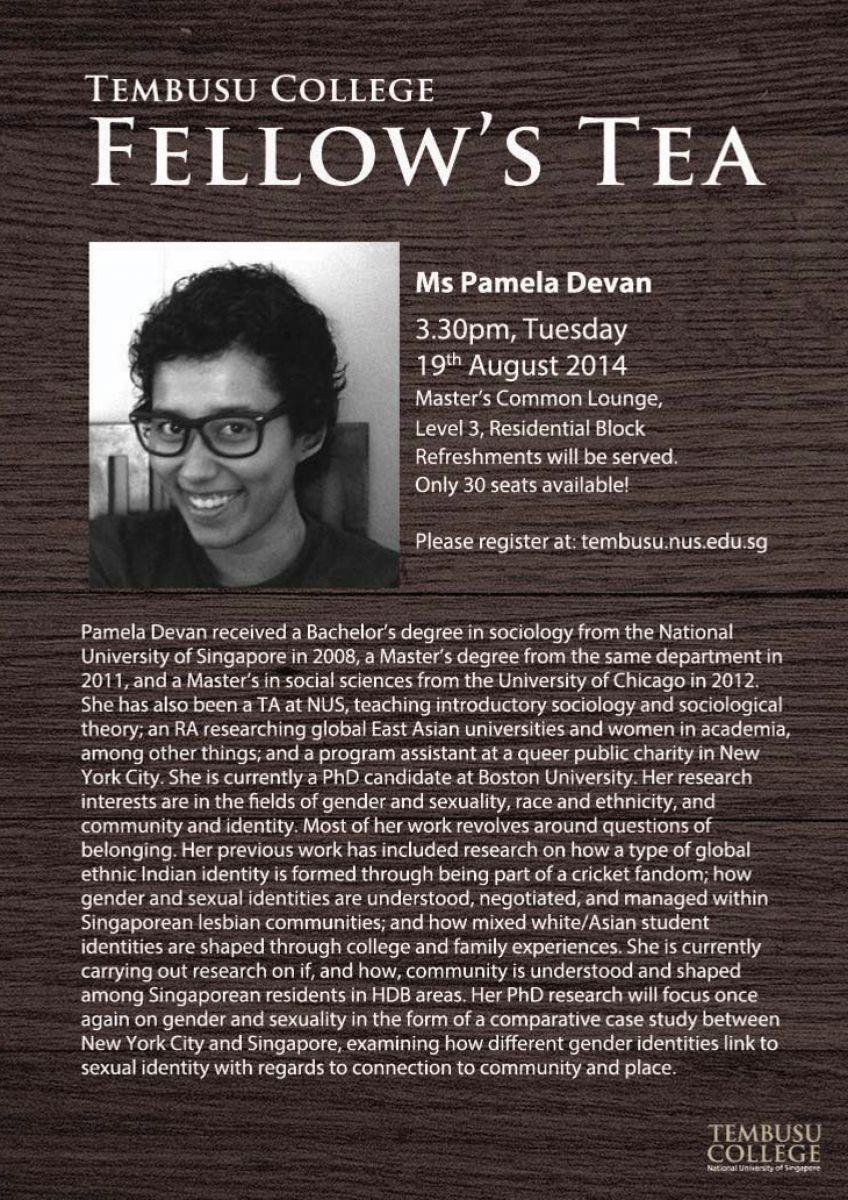
Tembusu College Fellow’s Tea
Ms Pamela Devan
3.30pm, Tuesday
19th August 2014
Master’s Common Lounge,
Level 3, Residential Block
Refreshments will be served.
Only 30 seats available!
Please register at dev-tembusu-nus.pantheonsite.io
Pamela Devan received a Bachelor’s degree in sociology from the National University of Singapore in 2008, a Master’s degree from the same department in 2011, and a Master’s in social sciences from the University of Chicago in 2012. She has also been a TA at NUS, teaching introductory sociology and sociological theory; an RA researching global East Asian universities and women in academia, among other things; and a program assistant at a queer public charity in New York City. She is currently a PhD candidate at Boston University. Her research interests are in the fields of gender and sexuality, race and ethnicity, and community and identity. Most of her work revolves around questions of belonging. Her Previous work has included research on how a type of global ethnic Indian identity is formed through being part of a cricket fandom; how gender and sexual identities are understood, negotiated, and managed within Singaporean lesbian communities; and how mixed white/Asian student identities are shaped through college and family experiences. SHe is currently carrying out research on if, and how, community is understood and shaped among Singaporean resident in HDB areas. Her PhD research will focus once again on gender and sexuality in the form of a comparative case study between New York City and Singapore, examining how different gender identities link to sexual identity with regards to connection to community and place.


